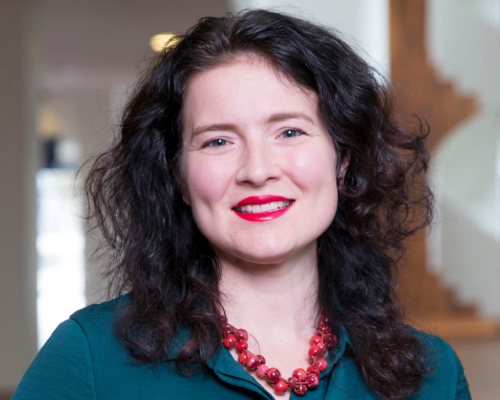Understanding How We Learn
A Quest for Breakthroughs in Autism and Cognitive Disorders
Dr. Aleksandra Badura, Associate Professor of Neuroscience at Erasmus MC, the path to understanding the brain began with a simple but profound question: How does it really work?
She began her academic career with a master’s degree in psychology, later shifting to neuroscience in pursuit of a more rigorous, mechanistic understanding of complex phenomena such as emotions and sleep. A defining moment came during her PhD, watching a rat’s brain activity shift during a seizure an experience that cemented her dedication to understanding the neural basis of behavior. Today, her work centers on the cerebellum’s non-motor functions and its role in cognitive dysfunctions, particularly in autism.

A Quest for Breakthroughs in Autism and Cognitive Disorders
For Dr. Aleksandra Badura, Associate Professor of Neuroscience at Erasmus MC, the path to understanding the brain began with a simple but profound question: How does it really work?
She began her academic career with a master’s degree in psychology, later shifting to neuroscience in pursuit of a more rigorous, mechanistic understanding of complex phenomena such as emotions and sleep. A defining moment came during her PhD, watching a rat’s brain activity shift during a seizure—an experience that cemented her dedication to understanding the neural basis of behavior. Today, her work centers on the cerebellum’s non-motor functions and its role in cognitive dysfunctions, particularly in autism.
Harmonizing Science and Care
Dr. Badura studies cognitive flexibility—the brain’s ability to adapt behavior to changing conditions. This flexibility is often impaired in neurodivergent individuals, especially those with autism. Studying it in mice requires long, complex tasks that demand both high motivation and low stress in the animals.
The challenge: modeling these behaviors while ensuring animal welfare and avoiding system failures that could demotivate animals and compromise data.
Virtual Reality Built for Mice-and Scientists
During her postdoc in the U.S., Dr. Badura saw the potential of virtual reality to mimic complex tasks in ways mice could naturally engage with.
“Mice have a natural desire to run,” she notes, and VR harnesses that instinct.
However, custom-built VR systems were fragile and time-consuming to maintain. When she returned to the Netherlands in 2014–2015, she looked for a system that didn’t require her to be an engineer or programmer. That’s when she found PhenoSys. Since purchasing her first setup in 2015, she’s appreciated the system’s robustness and its focus on animal welfare.

Whenever we needed to adapt the system one way or the other it was always met with support and enthusiasm from the PhenoSys team—they think along with the scientist.

Industry and Academia: A Symbiotic Relationship
Dr. Badura is an advocate for collaboration between academia and industry.

I think companies and academia really need each other… we can test and pilot things that then the company can really work out and deploy on a larger scale, and then also give support.

She emphasizes that standardization and reproducibility are critical for behavioral research—and collaboration helps make that possible.
The Mouse Whisperer Approach
Often referred as a “Mouse Whisperer”, Dr. Badura shared invaluable tips for ethical animal handling that also improve experimental outcomes.
- Gradual habituation to reduce stress
- Group housing and early enrichment
- Motivation through rewards like soy milk rather than harsh water restriction
- Reliable training routines that keep animals engaged and performing
Impact and Future Horizons
Her lab’s work aims to:
- Uncover how cerebellar circuits relate to autism and cognitive disorders
- Create more reproducible, humane behavioral studies
- Develop translational insights through collaboration with patient foundations
- Foster open science through cross-disciplinary and industry partnerships
A Philosophy of Collaboration
Dr. Badura lives by the principle: “If you want to go far, go together.”
Her advice to young scientists:


Appreciate your trainees and your team, and collaborate as much as you can, be it with other researchers, companies and the community.

